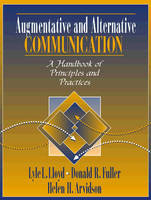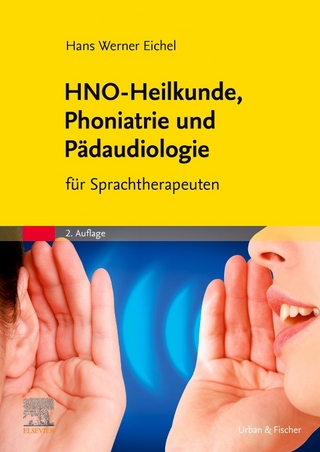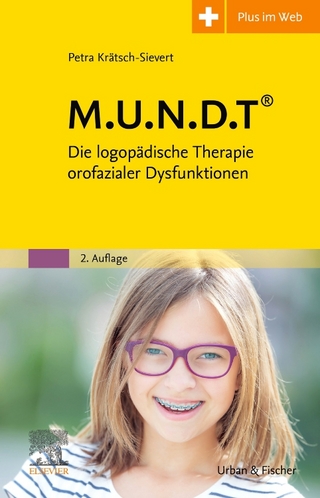
Augmentative and Alternative Communication
Pearson (Verlag)
978-0-205-19884-9 (ISBN)
- Titel ist leider vergriffen;
keine Neuauflage - Artikel merken
Each chapter closes with “Summary.” I.INTRODUCTION TO AAC.
1.Introduction and Overview.
Perspectives.
2.History of AAC.
Antecedents.
Needs of Individuals.
AAC Modes and Methods.
AAC Research.
Assistive Communication Devices.
Institutionalization.
Controversial Issues.
3.AAC Model and Taxonomy.
Communication Models in General.
An AAC Model.
AAC Taxonomy.
4.Terminology Issues.
General Terminology.
Symbol Terminology.
Technology Terminology.
II.SYMBOLS.
5.Introduction to Symbols.
Natural Languages and AAC Symbols.
AAC Symbols: The Means to Represent.
Issues Relevant to Aided and Unaided Symbols.
6.Aided AAC Symbols.
Aided AAC Symbol Descriptions.
Aided Symbol Characteristics.
7.Unaided AAC Symbols.
Historical and Theoretical Background of Sign Languages and Other Unaided Systems.
Basic Characteristics of Unaided Symbol Communication.
Unaided AAC Symbol Classifications and Descriptions.
Other Classifications.
III.TECHNOLOGY.
8.Principles and Uses of Technology.
Applying Technology.
Characteristics and Feature Matching.
Technology for Individuals with Communication Disabilities.
Selection and Transmission.
Laws for Applying Technology.
Principles for the Use of Technology.
9.Low Technology.
Components of Low Technology AAC Devices.
10.High Technology.
Development of Computers.
Computer Functions.
Input Devices and Features.
Output Devices and Features.
Dedicated Communication Devices.
Nondedicated Devices.
Software.
Telecommunication.
Environmental Control.
Future Applications.
Technology Resources.
IV.AAC ASSESSMENT.
11.AAC Assessment Process.
AAC Assessment Process and Purpose.
AAC Assessment Principles.
AAC Assessment Procedures.
AAC Assessment Components.
Flow of an AAC Assessment.
12.Vocabulary Selection.
Early Lexicons and Linguistic Changes.
Individualization.
Methods of Vocabulary Selection.
Case Example.
Evaluating Selected Vocabulary.
13.Symbol Selection.
Phase I: General AAC Symbol Selection Considerations.
Phase II: Selecting Specific Symbols and Teaching Considerations.
14.Technology Selection.
Roles and Responsibilities in Selecting Technology.
Technology Selection Variables.
Feature Matching.
Trial Use of AAC Devices.
V.AAC INTERVENTION.
15.Intervention Principles and Procedures.
Appropriate Candidates for AAC Services.
Developing and Implementing AAC Intervention Programs.
AAC Goals.
Instructional Delivery.
AAC Intervention Principles.
16.Sensory Impairments.
Hearing Impairment.
Visual Impairment.
Dual Sensory Impairment (DSI).
17.Seating, Other Positioning, and Motor Control.
Definitions of Seating, Positioning, and Motor Control.
Common Neuromusculoskeletal Problems.
Effects of Positioning.
Seating as the Primary Position.
Selecting a Body Sites and Methods to Control AAC Systems.
Motor Control, Motor Learning, and Motor Teaching.
18.Intervention for Persons with Developmental Disabilities.
Development of Communicative Competence.
Nonlinguistic Communication.
Linguistic Communication.
Educational Issues.
Vocational Issues.
19.Intervention for Persons with Acquired Disorders.
Aphasia.
Acquired Progressive Neurogenic Diseases.
Acquired Physical Disabilities.
VI.Current Issues and Trends.
20.Professional Concerns and Issues.
Legal Bases.
Due Process and Expert Testimony.
Ethics.
Competencies, Certification, and Licensure.
21.Service Delivery and Funding.
Service Delivery.
Funding.
22.Multicultural/Cultural Issues.
Culture and AAC.
Clinical Issues: Assessment and Intervention.
23.Literacy.
Mainstream Literacy Research.
Literacy Development in AAC Users.
Assessment.
Intervention.
24.Communication-Based Approaches to Problem Behavior.
Problem Behavior.
Communicative Nature of Problem Behavior.
Communication-Based Approaches.
Functional Assessment.
Developing Interventions-Representing, Selecting, and Transmitting Functionally Equivalent Responses.
25.Epilogue.
Foundations and Framework.
Symbols.
Technology.
AAC Assessment.
AAC Intervention.
Current Issues and Trends.
APPENDICES.
A.Characteristics and Feature Guides.
B.AAC Resources and Organizations.
C.Devices and Software.
D.Possible AAC Team Members and Traditional Responsibilities.
GLOSSARY.
REFERENCES.
AUTHOR INDEX.
SUBJECT INDEX.
| Sprache | englisch |
|---|---|
| Maße | 243 x 185 mm |
| Gewicht | 1039 g |
| Themenwelt | Medizin / Pharmazie ► Gesundheitsfachberufe ► Logopädie |
| ISBN-10 | 0-205-19884-8 / 0205198848 |
| ISBN-13 | 978-0-205-19884-9 / 9780205198849 |
| Zustand | Neuware |
| Haben Sie eine Frage zum Produkt? |
aus dem Bereich


